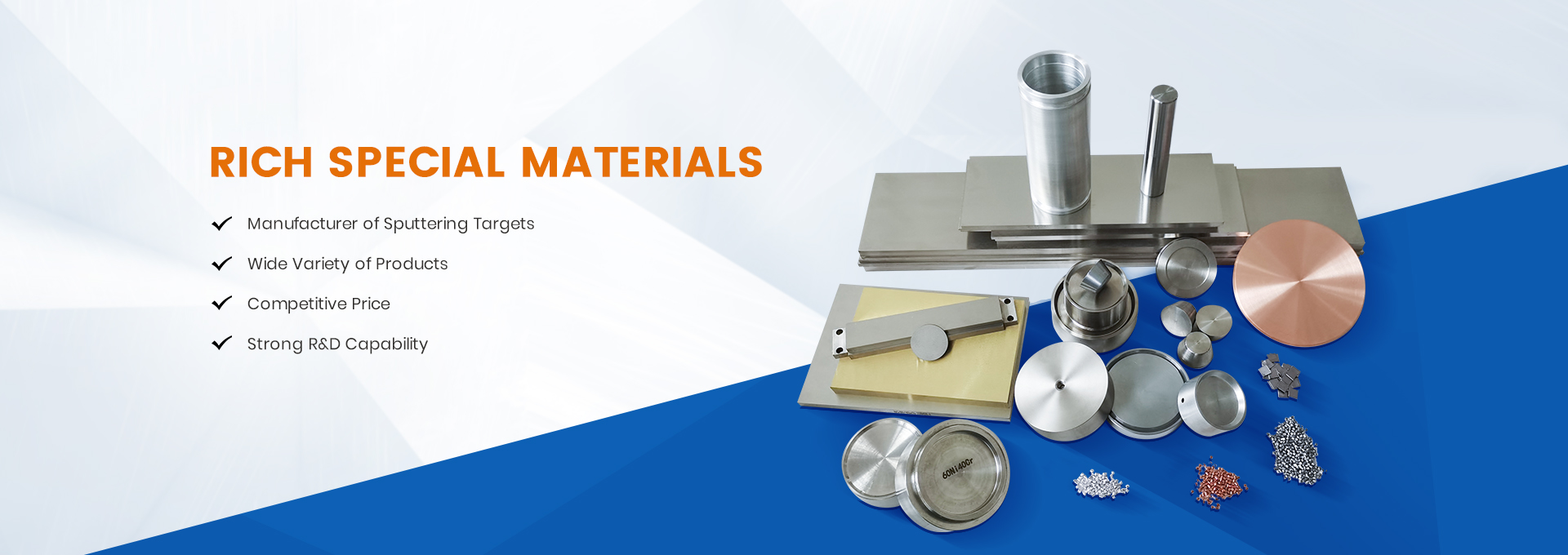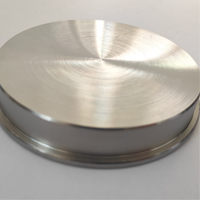As we all know, the development trend of target material technology is closely related to the development trend of film technology in the downstream application industry. With the technological improvement of film products or components in the application industry, the target technology should also change. For example, Ic manufacturers have recently focused on the development of low resistivity copper wiring, which is expected to significantly replace the original aluminum film in the next few years, so the development of copper targets and their required barrier targets will be urgent.
In addition, in recent years, flat panel display (FPD) has largely replaced the cathode-ray tube (CRT) -based computer display and television market. It will also greatly increase the technical and market demand for ITO targets. And then there’s the storage technology. The demand for high-density, large-capacity hard drives and high-density erasable discs continues to increase. All these have led to changes in the demand for target materials in the application industry. In the following, we will introduce the main application fields of target and the development trend of target in these fields.
1. Microelectronics
In all application industries, the semiconductor industry has the most stringent quality requirements for target sputtering films. Silicon wafers of 12 inch (300 epistaxis) have now been manufactured. The width of the interconnect is decreasing. The requirements of silicon wafer manufacturers for target materials are large scale, high purity, low segregation and fine grain, which requires the target materials to have better microstructure. The crystalline particle diameter and uniformity of the target material have been considered as the key factors affecting the film deposition rate.
Compared with aluminum, copper has higher electromobility resistance and lower resistivity, which can meet the requirements of conductor technology in the submicron wiring below 0.25um, but it brings other problems: low adhesion strength between copper and organic medium materials. Moreover, it is easy to react, which leads to the corrosion of the copper interconnect and the circuit breakage during the use of the chip. In order to solve this problem, a barrier layer should be set between the copper and the dielectric layer.
The target materials used in the barrier layer of copper interconnection include Ta, W, TaSi, WSi, etc. But Ta and W are refractory metals. It is relatively difficult to make, and alloys such as molybdenum and chromium are being studied as alternative materials.
2. For the display
Flat panel display (FPD) has greatly impacted the cathode-ray tube (CRT) -based computer monitor and television market over the years, and will also drive the technology and market demand for ITO target materials. There are two types of ITO targets today. One is to use nanometer state of indium oxide and tin oxide powder after sintering, the other is to use indium tin alloy target. ITO film can be fabricated by DC reactive sputtering on indium-tin alloy target, but the target surface will oxidize and affect the sputtering rate, and it is difficult to get large size alloy target.
Nowadays, the first method is generally adopted to produce ITO target material, which is sputtering coating by magnetron sputtering reaction. It has a fast deposition rate. The film thickness can be accurately controlled, the conductivity is high, the consistency of the film is good, and the adhesion of the substrate is strong. But the target material is difficult to make, because indium oxide and tin oxide do not easily sintered together. Generally, ZrO2, Bi2O3 and CeO are selected as sintering additives, and the target material with a density of 93%~98% of the theoretical value can be obtained. The performance of ITO film formed in this way has a great relationship with the additives.
The blocking resistivity of ITO film obtained by using such target material reaches 8.1×10n-cm, which is close to the resistivity of pure ITO film. The size of FPD and conductive glass is quite large, and the width of conductive glass can even reach 3133mm. In order to improve the utilization of target materials, ITO target materials with different shapes, such as cylindrical shape, are developed. In 2000, the National Development Planning Commission and the Ministry of Science and Technology included ITO large targets in the Guidelines for Key Areas of Information Industry Currently Prioritized for Development.
3. Storage use
In terms of storage technology, the development of high-density and large-capacity hard disks requires a large number of giant reluctance film materials. The CoF~Cu multilayer composite film is a widely used structure of giant reluctance film. The TbFeCo alloy target material needed for magnetic disc is still in further development. The magnetic disc manufactured with TbFeCo has the characteristics of large storage capacity, long service life and repeated non-contact erasability.
Antimony germanium telluride based phase change memory (PCM) showed significant commercial potential, becomes part NOR flash memory and DRAM market an alternative storage technology, however, in the implementation more rapidly scaled down one of the challenges on the road to exist is lack to reset the current production can be lowered further completely sealed unit. Reducing reset current reduces memory power consumption, extends battery life, and improves data bandwidth, all important features in today’s data-centric, highly portable consumer devices.
Post time: Aug-09-2022




